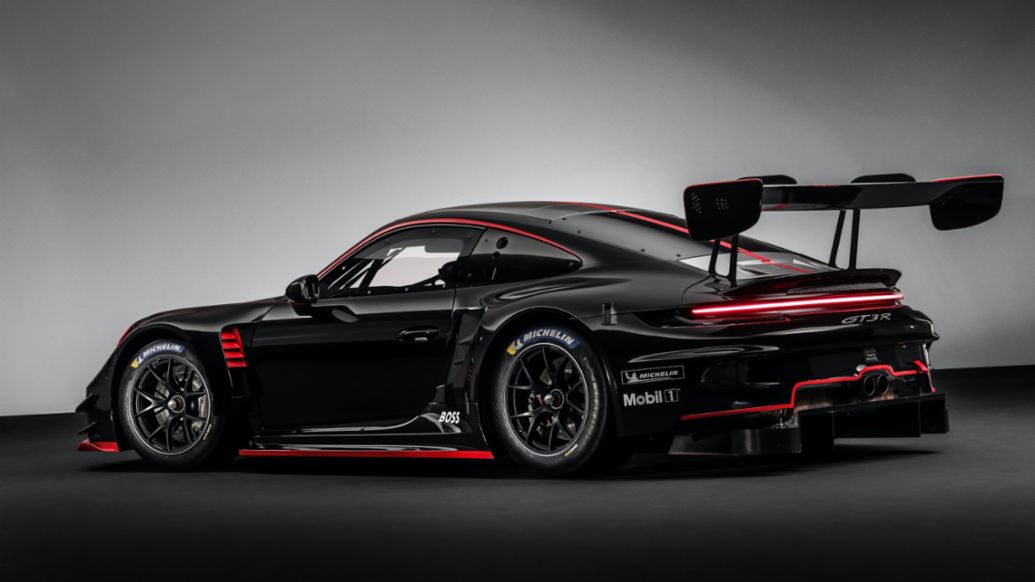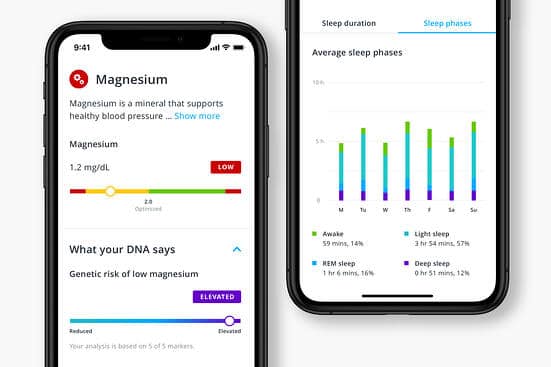Con la última generación del 911 GT3 R, Porsche presenta un nuevo auto de carreras para clientes. El nuevo retador de la serie GT3 en todo el mundo se basa en la actual generación 992 de la icónica plataforma 911 y estará listo para competir a principios de la temporada 2023. El desarrollo comenzó en 2019. Se dio prioridad a mejorar aún más la capacidad de conducción para los conductores con varios conjuntos de habilidades, así como a aprovechar mayores reservas de rendimiento para diferentes clasificaciones de Balance of Performance (BoP). Otro enfoque fue optimizar el manejo del auto de carrera para los equipos y reducir los costos de funcionamiento. Porsche Motorsport ahora ofrece el nuevo 911 GT3 R a los clientes norteamericanos a un precio de $567,210 y extras opcionales. En los Estados Unidos y Canadá, el nuevo corredor solo está disponible a través de Porsche Motorsport North America.
“En América del Norte, GT3 es la categoría superior de las carreras de GT, como pronto lo será en todo el mundo”, comentó Volker Holzmeyer, presidente y director ejecutivo de Porsche Motorsport North America. “Esto hizo que la nueva generación del 911 GT3 R fuera especialmente importante para nuestro mercado. Su desarrollo, que incorpora no solo las lecciones aprendidas de la generación anterior del GT3 R, sino también del monomarca de la Copa GT3 y del 911 RSR, ha hecho que este coche sea muy atractivo para los equipos de nuestros clientes. La capacidad de conducción es muy importante para la amplia gama de conductores que tenemos compitiendo aquí y ese fue el enfoque del modelo 992 911 GT3 R. Ya hemos tenido un gran interés en el automóvil y estamos ansiosos por verlo girar por primera vez. aquí pronto. Después de que la clase GT3 fuera anunciada como una categoría profesional en el Campeonato IMSA WeatherTech SportsCar de América del Norte, el Campeonato Mundial de Resistencia (WEC) de la FIA hará lo mismo. A partir de 2024, los autos de carreras GT3 como el nuevo 911 GT3 R podrán participar en las 24 Horas de Le Mans por primera vez.
“Dimos en el blanco con el predecesor enormemente exitoso. En consecuencia, el listón para su sucesor es alto”, enfatiza Sebastian Golz, Gerente de Proyecto 911 GT3 R en Porsche Motorsport. “Nuestra tarea consistía menos en hacer que el nuevo 911 GT3 R fuera aún más rápido: la clasificación dentro de las ventanas de rendimiento establecidas por el BoP anula rápidamente esta ventaja. Para nosotros, se trataba principalmente de que nuestros clientes pudieran conducir el auto de carreras rápido durante más tiempo. Esto requiere durabilidad y es por eso que nos enfocamos principalmente en mejorar la capacidad de conducción. Esto se refleja en la banda de revoluciones utilizable más amplia del nuevo motor de 4.2 litros, una aerodinámica más estable y constante y menores cargas en los neumáticos traseros, lo que permite que su potencial dure más tiempo”.
Motor basado en el 911 generación 992
En el núcleo del nuevo auto de carreras se encuentra el motor casi estándar basado en el motor 911 de la generación 992. Como en el modelo anterior, se trata de un motor bóxer de seis cilindros refrigerado por agua con tecnología de cuatro válvulas e inyección directa de gasolina. La principal novedad es el desplazamiento. Al igual que el 911 RSR, la capacidad del nuevo 911 GT3 R ha aumentado un cinco por ciento, de 3.997 a 4.194 cc. Esto ha aumentado la potencia máxima del motor a alrededor de 565 HP (416 kW). Sin embargo, lo que es más importante, Porsche ha optimizado la curva de par y potencia en todo el rango de revoluciones. En consecuencia, el nuevo seis cilindros y 4,2 litros se adapta mejor a una gama más amplia de experiencias de conducción.

El seis cilindros de altas revoluciones continúa sin turboalimentación y se sienta en la posición trasera clásica, mejorando así la tracción y el frenado. Sin embargo, se ha inclinado hacia adelante 5,5 grados, creando más espacio para el difusor debajo de la carrocería. Los componentes auxiliares, como el alternador y el compresor del aire acondicionado, se movieron significativamente hacia adelante y hacia abajo en un espacio frente al motor y la caja de cambios, lo que tiene un efecto positivo en el equilibrio de peso del 911 GT3 R. El concurso secuencial de seis velocidades La caja de cambios de malla se deriva del actual auto de carreras 911 GT3 Cup. Las paletas de cambio controlan un actuador de tambor de cambio electrónico que permite cambios de marcha particularmente rápidos y precisos.
Suspensión modificada en muchos detalles.
La suspensión del nuevo 911 GT3 R (muchos detalles de la cual se han modificado) favorece la facilidad de conducción, permite una dirección más precisa, garantiza un menor desgaste de los neumáticos traseros y reduce el tiempo dedicado a los cambios de configuración. Para ello, se tomaron numerosos componentes y soluciones técnicas del 911 RSR. En el eje delantero, un diseño de doble horquilla de última generación controla las ruedas. El eje trasero luce un diseño multibrazo. Los amortiguadores KW se mejoraron aún más y ofrecen cinco configuraciones de ajuste. Las modificaciones de configuración se realizan con las llamadas cuñas. Estas placas permiten ajustes de precisión sin necesidad de volver a alinear la suspensión después, lo que requiere mucho tiempo.

La posición optimizada de los puntos de pivote centrales en el eje delantero libera espacio para el concepto aerodinámico de “carrera bajo el suelo”. Al igual que en el 911 RSR, esta parte inferior de la carrocería elevada permite un flujo de aire limpio hacia el difusor trasero y reduce la sensibilidad de cabeceo del coche de carreras, es decir, una gran inclinación al frenar. Las ruedas traseras se han movido más hacia atrás, lo que amplía la distancia entre ejes de 2459 a 2507 milímetros (8,0 pies a 8,22 pies). Esto también reduce la carga sobre los neumáticos traseros y mejora la consistencia del rendimiento de los neumáticos en períodos más largos.

Pinzas de freno de competición del especialista AP
Además de las pinzas de freno de carreras monobloque de aluminio, los discos de freno del nuevo 911 GT3 R ahora también son suministrados por la empresa especializada AP. Los discos delanteros de acero ranurados y ventilados internamente miden 390 mm (15,35 pulgadas) de diámetro y son activados por seis pistones. En la parte trasera se montan pinzas de cuatro pistones y discos de 370 mm (14,56 pulgadas). Una sofisticada aplicación de software para el ABS de carreras de quinta generación reduce el desgaste de los neumáticos y los frenos. El sistema de control de tracción de Porsche también recibió un mayor desarrollo.
El nuevo 911 GT3 R es el segundo coche de carreras de Porsche Motorsport basado en el modelo actual 992 911 después del 911 GT3 Cup. Su carrocería liviana con un diseño inteligente compuesto de aluminio y acero se basa en el modelo de producción, aunque con importantes modificaciones para su uso en el 911 GT3 R. Casi todos los paneles de la carrocería están hechos de fibra de carbono liviana, incluidas las tapas delantera y trasera, puertas, laterales paneles, alerón trasero y techo. Los pasos de rueda están hechos de fibras de aramida.

Cuerpo ligero con un diseño compuesto de aluminio y acero
En un vehículo como el nuevo 911 GT3 R, la funcionalidad es clave. Sin embargo, Grant Larson de Style Porsche volvió a tener éxito en la creación de formas particularmente impresionantes y armoniosas. Acentúan la herencia del Porsche 911 y la combinan con una eficiencia sofisticada. En particular, esto se refleja en la aerodinámica. Los puntos clave incluyen una parte inferior elevada por delante del eje delantero, por primera vez junto con una bandeja inferior lisa y un difusor trasero. Esta combinación mejora la carga aerodinámica sin un aumento significativo en la resistencia. El alerón trasero ahora cuenta con una montura de cuello de cisne. Esto asegura un flujo de aire limpio debajo del ala y, por lo tanto, mejora la eficiencia aerodinámica del componente.
El interior del nuevo automóvil continúa con el tema de la eficiencia y la evolución. El asiento se ha movido más cerca del centro del automóvil. Esto permitió a Porsche adaptar de manera óptima la posición más ergonómica del asiento a la jaula antivuelco mejorada y a los nuevos mandatos de protección contra impactos laterales de la FIA. Al igual que en el predecesor, el volante y los pedales se pueden ajustar longitudinalmente para adaptarse al conductor manteniendo un asiento fijo. Los especialistas de Porsche volvieron a examinar de cerca el arnés de seis puntos. Las lengüetas ahora se deslizan aún más rápido en el cierre a través de rampas especiales, ahorrando alrededor de un segundo durante las paradas en boxes para los cambios de conductor. El diseño del volante también recibió más mejoras en el modelo anterior. Incorpora elementos que han demostrado su eficacia en los coches de carreras 911 GT3 Cup y 911 RSR de última generación. La pantalla de 10,3 pulgadas, por ejemplo,
Los faros LED de alto rendimiento del 911 GT3 R se basan en la tecnología de colimador, que Porsche desarrolló para el nuevo prototipo IMSA GTP y WEC LMDh 963, entre otros. Este dispositivo funciona como una lupa, solo que al revés. Ilumina un área particularmente grande de la pista de carreras y es una mejora significativa con respecto al modelo anterior, que había sido considerado líder de su clase. La información detallada sobre el nuevo 911 GT3 R.
Datos técnicos Porsche 911 GT3 R (992) modelo año 2023
Concepto • Coche de carreras monoplaza para clientes; homologado para la categoría FIA GTE; base de homologación: Porsche 911 GT3 (serie 992).
Peso/dimensiones
• Peso base: aprox. 1.250 kg (dependiendo de la clasificación BoP); distancia entre ejes: 2.507 mm.
• Longitud: 4.619 mm; ancho: 2.039 mm (eje delantero) / 2.050 mm (eje trasero).
Motor
• Bóxer de seis cilindros refrigerado por agua, montado en la parte trasera; cilindrada 4.194 cc, carrera 81,5 mm, diámetro interior 104,5 mm; revoluciones máx. 9250/min; potencia: aprox. 416 kW (565 CV); tecnología de cuatro válvulas; sistema de mariposa de un solo acelerador; inyección directa de combustible; unidad de control del motor Bosch MS 6.6; lubricación por cárter seco con intercambiador de calor aceite-agua; volante monomasa; sistema de escape de carrera con tubos de escape dobles y convertidor catalítico certificado por DMSB; Calidad del combustible: Superplus sin plomo hasta E20 (mín. 98 octanos).
Transmisión
• Caja de cambios secuencial de malla constante de seis velocidades Porsche; levas de cambio en el volante con actuador de cambio electrónico; diferencial de deslizamiento limitado mecánico con unidad de sistema de precarga ajustable; Embrague de carrera de carbono de tres placas.
Cuerpo
• Cuerpo ligero con diseño inteligente compuesto de aluminio y acero; puntos de montaje para dispositivo de elevación, escotilla de rescate extraíble en el techo; jaula antivuelco soldada; homologado para uso como copiloto en circuitos; asiento de competición de carbono de seis tornillos según FIA 8862-2009; arnés de seguridad de seis puntos para uso con HANS®; conjunto de pedales ajustables longitudinalmente y columna de dirección ajustable con sensor de ángulo de dirección; cubierta frontal con sujetadores de liberación rápida integrados, conducto de aire de salida del enfriador y entrada de aire central para la ventilación de la cabina; parachoques delantero ensanchado con borde de alerón; guardabarros con extensiones; moldura trasera con luz de lluvia integrada de acuerdo con FIA; puertas, portón trasero y alerón trasero de fibra de carbono; alerón trasero con soportes de “cuello de cisne”; acristalamiento completamente de policarbonato con revestimiento duro; parabrisas calefactable; sistema de toma de aire de cuatro postes; puntos de montaje de válvulas en ambos lados; Pila de combustible FT3 de 117 litros delante del coche.
• Molduras interiores de fibra de carbono, volante multifuncional de fibra de carbono con acoplamiento de liberación rápida, levas de cambio y pulsadores iluminados; panel táctil digital ergonómico con retroiluminación multicolor; redes de seguridad (centro y lado del conductor) de acuerdo con las últimas normas de seguridad de la FIA; protección integrada contra impactos laterales CFK; asiento del conductor con ventilación de asiento; sistema de extinción de incendios con unidad de disparo electrónico.
Suspensión
• Brazos de control y soportes superiores de aluminio forjado, rigidez optimizada; cojinetes esféricos de alta resistencia con protección contra el polvo; cubos de rueda con cierre centralizado; amortiguadores de carreras ajustables en cinco direcciones, diseño de válvula específico para deportes de motor y función de soplado; ajuste de la suspensión mediante cuñas; barras antivuelco tipo espada ajustables en ambos lados; potenciómetro de recorrido de resorte; sistema de control de presión de neumáticos.
Eje delantero:
• Eje delantero de doble horquilla, altura de manejo, camber y convergencia ajustables.
• Dirección asistida electrohidráulica.
• Llantas de aleación de una sola pieza, 12,5J x 18, tamaño de neumático 30/68-18.
Eje trasero:
• Suspensión trasera multibrazo, altura de manejo, camber y convergencia ajustables.
• Cardán de competición con bridas trípode.
• Llantas de aleación de una sola pieza, 13,5J x 18, tamaño de neumático 31/71-18.

Frenos
• Dos circuitos de frenos independientes que incorporan sensores de presión de frenos en los ejes delantero y trasero, distribución de la fuerza de frenado ajustable por el conductor a través del sistema de equilibrio de frenos; pastillas de freno de carreras; conductos de freno optimizados; sensores de temperatura de frenos; Posicionamiento ergonómico del pedal de freno para frenar con el pie izquierdo y derecho.
• ABS de competición Generación 5 de Bosch
• Eje delantero: pinzas de freno de competición monobloque de aluminio de seis pistones muelles de pistón ‘anti-kback’; discos de freno de acero multipieza ventilados internamente de 390 mm x 35,7 mm; cámara de disco de freno de aluminio.
• Eje trasero: pinzas de freno de carreras monobloque de aluminio de cuatro pistones con resortes de pistón ‘anti knock-back’; discos de freno de acero multipiezas de 370 mm x 32,1 mm ventilados internamente; cámara de disco de freno de aluminio.
Sistema eléctrico
• Arquitectura 992 EE Motorsport; nuevo conjunto de herramientas Porsche más fácil de usar con un manejo más optimizado; componentes electrónicos Cosworth de última generación; Unidad de registro de Porsche; Caja de energía Porsche; Pantalla a color Porsche de 10,3 pulgadas con RLU integrado, registro de datos a través de lápiz de EE. UU.; batería LiFePo4 a prueba de fugas de 12 V, 40 Ah en el espacio para los pies del pasajero; alternador de 210 A; panel táctil digital con retroiluminación multicolor; Limpiaparabrisas monobrazo con accionamiento directo (intermitente y continuo).
• faros LED con luces auxiliares integradas; Luces traseras LED más luz de lluvia. Anexos para Registrador de Datos de Accidentes (ADR).


























 These daily readings also feed into your WELLNESS SCORE, a newly calculated metric exclusive to our app that provides a daily snapshot of your progress towards optimizing your body. As you log actions according to your plan and change key physiological markers, you can track and monitor these changes reflected in your Wellness Score. InsideTracker’s data science team designed this proprietary algorithm to apply relative weight to critical changes and actions. Optimizations in your blood biomarkers will have a relatively more substantial effect on your Wellness Score. In contrast, improvements in physiological markers or daily check-ins on your Action Plan will have a somewhat smaller effect. Be sure to monitor your improvements because even those little changes in your Wellness Score will fuel feelings of reward and positively motivate you towards your goals.
These daily readings also feed into your WELLNESS SCORE, a newly calculated metric exclusive to our app that provides a daily snapshot of your progress towards optimizing your body. As you log actions according to your plan and change key physiological markers, you can track and monitor these changes reflected in your Wellness Score. InsideTracker’s data science team designed this proprietary algorithm to apply relative weight to critical changes and actions. Optimizations in your blood biomarkers will have a relatively more substantial effect on your Wellness Score. In contrast, improvements in physiological markers or daily check-ins on your Action Plan will have a somewhat smaller effect. Be sure to monitor your improvements because even those little changes in your Wellness Score will fuel feelings of reward and positively motivate you towards your goals.





